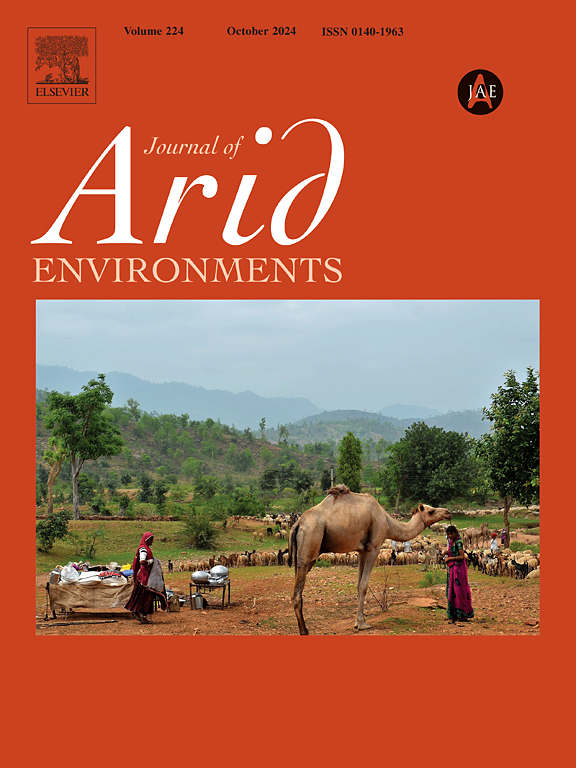Habitat distribution modelling to identify areas of high conservation value under climate change for an endangered arid land tree Tecomella undulata
IF 2.6
3区 环境科学与生态学
Q2 ECOLOGY
引用次数: 0
Abstract
The dryland ecosystems are fragile and have recently been subjected to paradigm shifts by climate change. To analyse this, we selected Tecomella undulata, an endangered arid land tree that adapts to the harsh climates of drylands. We collected 111 extant occurrence records of the species and utilised 16 environmental variables. The study identified that bio12, bio8, altitude, total nitrogen, CEC, and bio15 are the factors that significantly influence the distribution range and modelled species distribution ranges from LGM to 2100 using the Species Distribution Model. The model showed a decreased distribution from the past and predicts an increased distribution for the future. The reduced temperature and increased bio12 acted as limiting factors in the past, while the increase in bio15 and bio8 will act as enhancing factors for the future because of the warming effect due to climate change. The results predict that future climatic conditions will favour the species’ distribution. Therefore, the factors which might limit the species distribution will be anthropogenic, genetic, or pest-related, which was beyond the scope of our study and needs to be identified urgently to conserve the species. The study identified priority conservation areas where environmental factors suit the species. Still, most fall outside the current conservation sites, necessitating more regional conservation sites.

气候变化条件下濒危干旱区山竹生境分布模型研究
旱地生态系统是脆弱的,最近受到气候变化的范式转变。为了分析这一点,我们选择了Tecomella波动,一种适应干旱地区恶劣气候的濒危干旱土地树木。我们收集了111个现存物种的发生记录,并利用了16个环境变量。利用物种分布模型研究发现,从LGM到2100年,bio12、bio8、海拔、总氮、CEC和bio15是影响物种分布范围和模拟物种分布范围的显著因子。该模型显示,与过去相比,该分布有所减少,但预测未来的分布将有所增加。在过去,温度的降低和bio12的增加是限制因子,而在未来,由于气候变化的增温效应,bio15和bio8的增加将成为增强因子。结果预测,未来的气候条件将有利于该物种的分布。因此,限制该物种分布的因素可能是人为因素、遗传因素或与害虫有关的因素,这些因素超出了我们的研究范围,迫切需要确定以保护该物种。该研究确定了环境因素适合该物种的优先保护区。然而,大多数都不在目前的保护地点之内,因此需要更多的区域保护地点。
本文章由计算机程序翻译,如有差异,请以英文原文为准。
求助全文
约1分钟内获得全文
求助全文
来源期刊

Journal of Arid Environments
环境科学-环境科学
CiteScore
5.70
自引率
3.70%
发文量
144
审稿时长
55 days
期刊介绍:
The Journal of Arid Environments is an international journal publishing original scientific and technical research articles on physical, biological and cultural aspects of arid, semi-arid, and desert environments. As a forum of multi-disciplinary and interdisciplinary dialogue it addresses research on all aspects of arid environments and their past, present and future use.
 求助内容:
求助内容: 应助结果提醒方式:
应助结果提醒方式:


